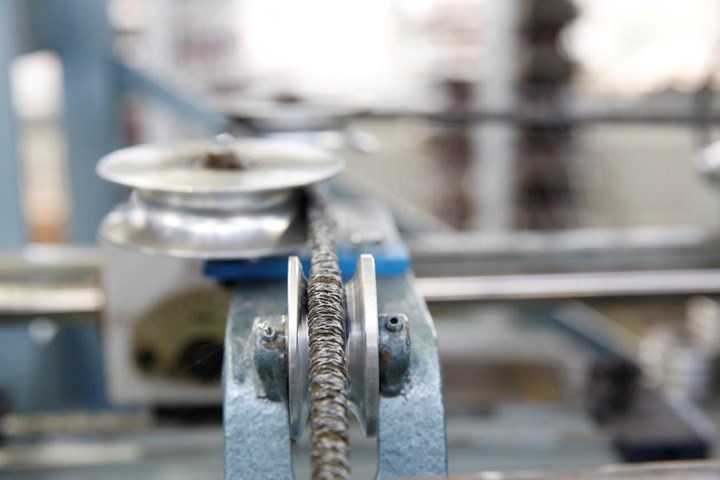CAMX 2022 exhibit preview: Gerster TechTex
Gerster TechTex’s gussets/corner reinforcements and fillers are intended to reinforce the corners of composite parts in automotive, wind and sports industries.
Gerster TechTex, a business unit of Gustav Gerster GmbH & Co. KG (Biberach an der Riß, Germany), is a specialty textile manufacturer for the composites market. Its focus is component-adapted reinforcement textiles for the automotive, wind power and sports articles industries. The company uses manufacturing processes such as weaving, knitting or braiding.
One of Gerster’s innovations, gussets/corner reinforcements and fillers, are intended to reinforce corners. They are applied in areas that need to be filled and/or areas that are difficult to reach with other textile semi-finished products. This is particularly the case for interior angles found in composite components, the company notes, where surfaces usually meet at right angles and can be reinforced on both sides with piping-like fiber cords. Corner reinforcements made of carbon fiber rovings are used in round composite components such as centrifuges or carbon fiber-reinforced polymer (CFRP) rims (e.g., to fill cavities or to reinforce certain areas in the circumferential direction). This reportedly enables an increase in permissible rotational speed and the bursting strength of CFRP components.
Even large composite structures such as wind turbine blades benefit from corner reinforcements, Gerster contends. Rotor blades, which are mainly made of glass fibers and carbon fibers, have large wall thicknesses in the area of the load-bearing spar caps. Here, very large quantities of rovings are integrated in the longitudinal direction of the rotor blade. These fiber bundles can be arranged and thus infiltrated more evenly with resin if the rovings are preformed into relatively thick, mostly round corner reinforcements. Gerster says the precise fiber orientation of its corner reinforcement innovation minimizes waviness and improves the strength and rigidity of the composite structure. Especially in the inner angles between spar caps and the supporting walls, high dynamic forces occur during rotor blade operation due to torsion and longitudinal bending. Notch stresses can be effectively reduced by using the corner reinforcements.
Related Content
-
Materials & Processes: Composites fibers and resins
Compared to legacy materials like steel, aluminum, iron and titanium, composites are still coming of age, and only just now are being better understood by design and manufacturing engineers. However, composites’ physical properties — combined with unbeatable light weight — make them undeniably attractive.
-
Plant tour: ÉireComposites, Galway, Ireland
An in-house testing business and R&D focus has led to innovative materials use and projects in a range of markets, from civil aerospace to renewable energy to marine.
-
Infinite Composites: Type V tanks for space, hydrogen, automotive and more
After a decade of proving its linerless, weight-saving composite tanks with NASA and more than 30 aerospace companies, this CryoSphere pioneer is scaling for growth in commercial space and sustainable transportation on Earth.








.jpg;maxWidth=300;quality=90)





